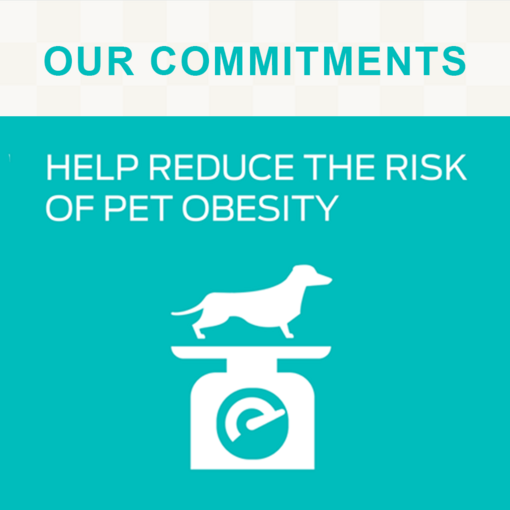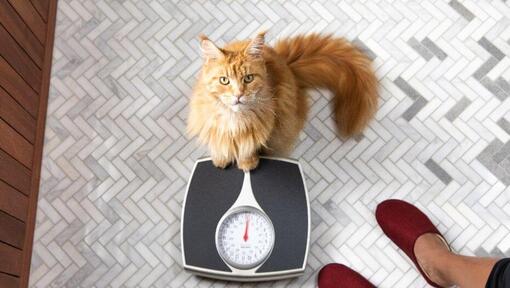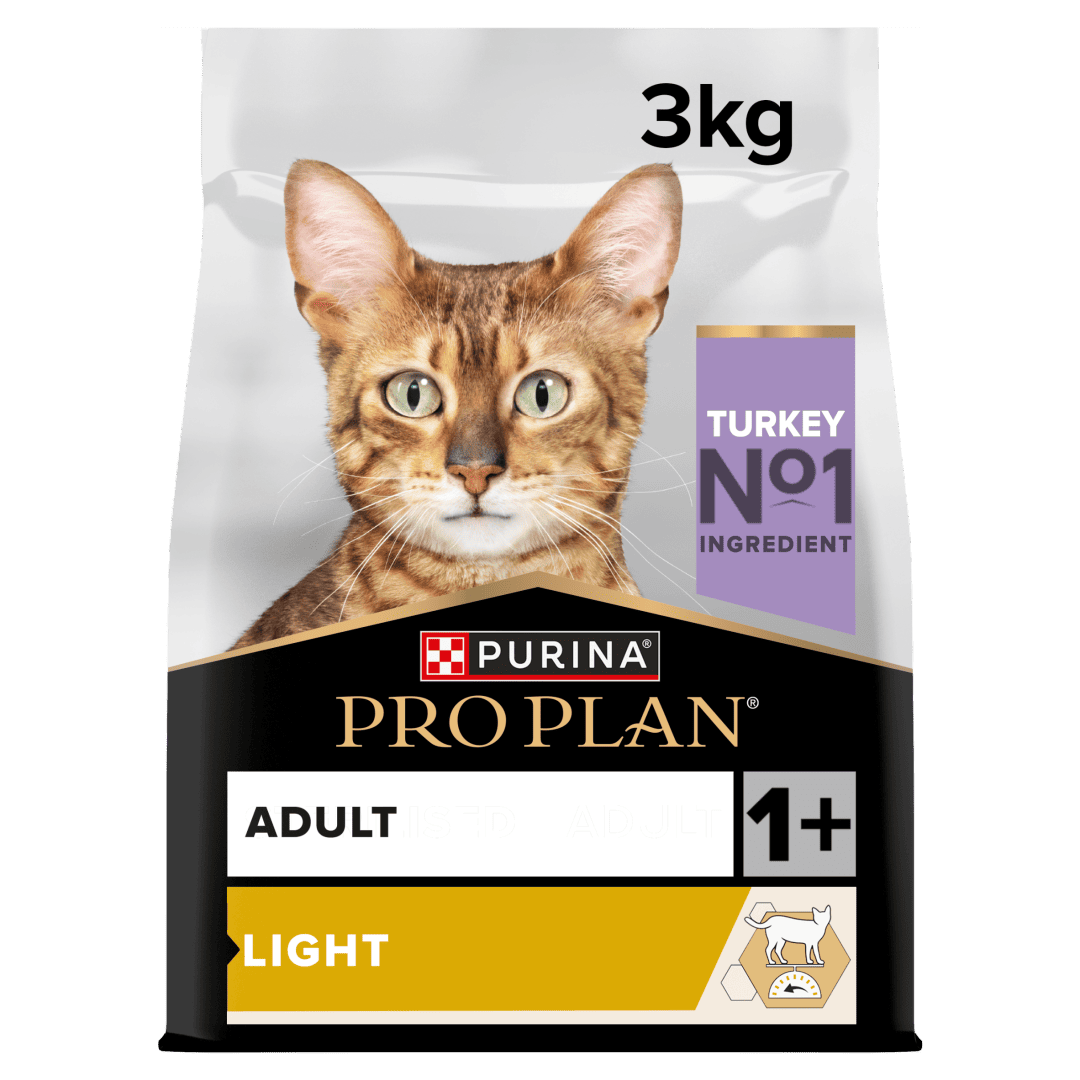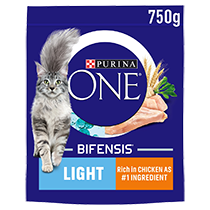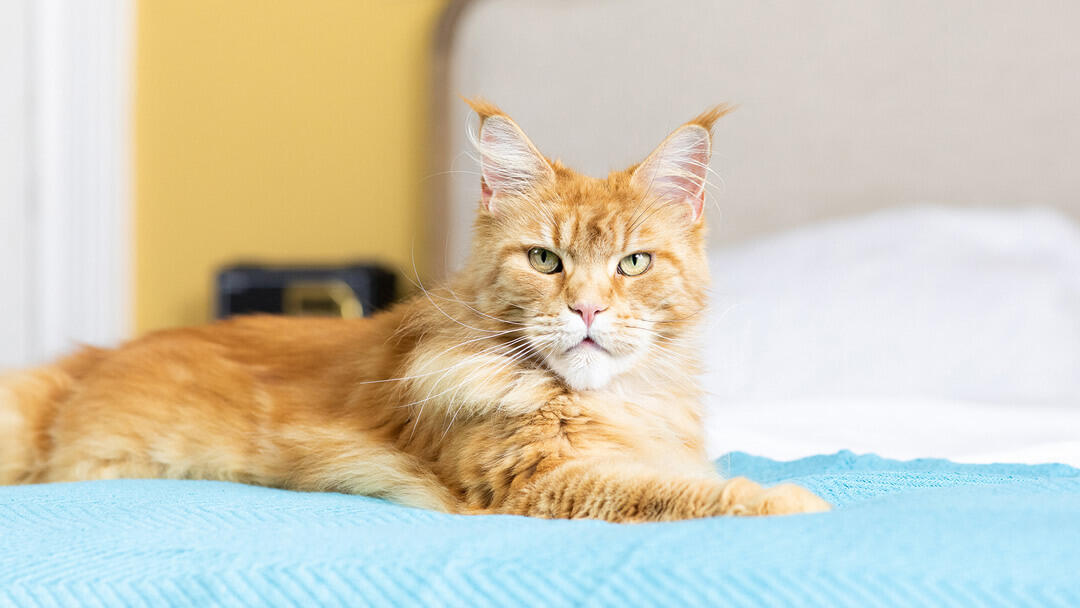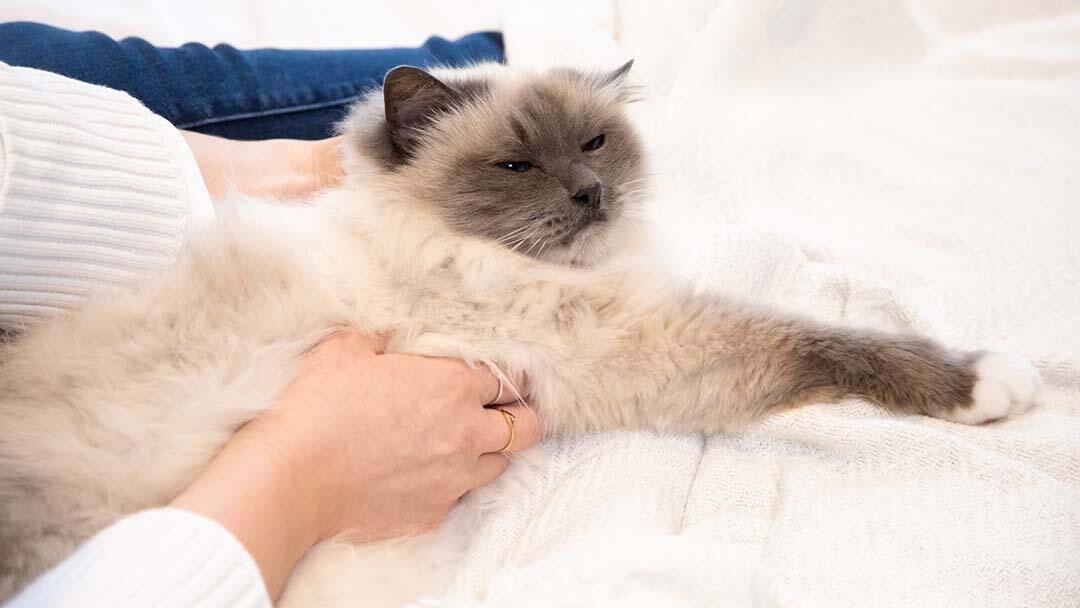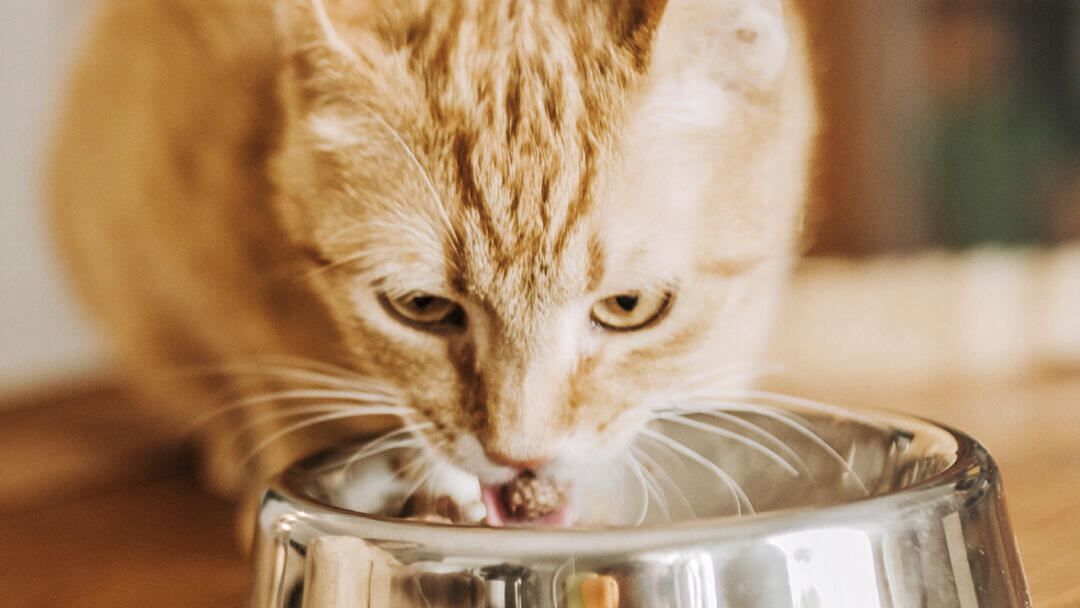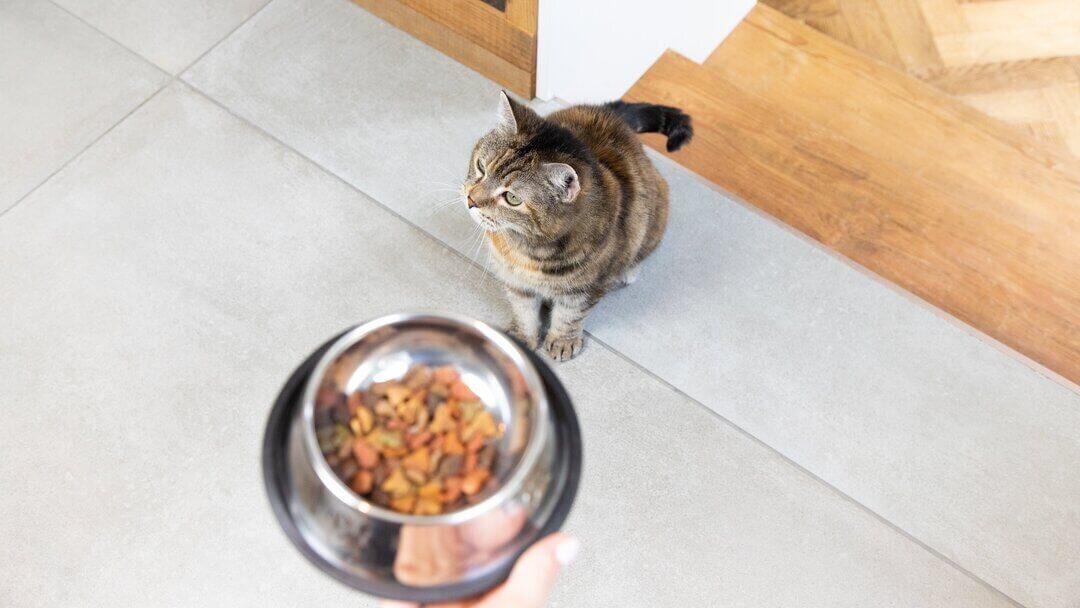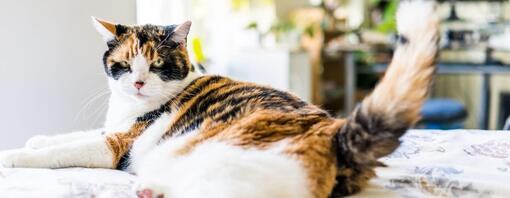
Just like us, cats can put on a few extra pounds, especially as they get older and become less active, or if they spend too much time indoors.
However, it’s important to try and prevent your cat from putting on excessive amounts of weight as overweight cats can face many health problems that can prevent them from enjoying a happy and healthy lifestyle.
Cat obesity affects around one in three adult cats in the UK population. That’s a lot of porky pets! The good news is that you can do a lot to help your feline friend keep their weight under control. By monitoring your cat’s weight and body condition, you can help reduce their chances of developing health issues that are common in overweight cats such as diabetes, osteoarthritis, lower urinary tract problems, and constipation.
How to tell if your feline friend needs to go on a diet
It can be tricky to tell if your cat is overweight, particularly if they’re longhaired. Some cats are also naturally stockier than others, depending on their breed. Even so, our body condition tool only takes a few minutes to complete and quickly gives you a good idea about the shape your pet is in.
If you’re still not sure, or you think you might have an overweight cat, have a chat with your vet. If you think your cat is overweight, it’s important to speak to them before you make any changes to their diet because their weight gain could be caused by an underlying illness, rather than an over-active appetite. For more information before you talk to your vet, take a look at our ‘assessing your cat’s body condition’ article.
Cat obesity risks
When a cat is starting to gain excessive weight, their internal systems and joints can become overloaded, and this can potentially lead to some serious health risks. While cat obesity significantly reduces your cat’s quality of life, it can also put them at a higher risk of health conditions like diabetes, urinary disease, arthritis, cardiovascular and respiratory diseases. Skin problems are also common in overweight cats because the more weight they gain, the more difficult grooming becomes.
How to weigh your cat
Weighing your cat at home is a simple way to monitor their weight. Simply hold your cat as you stand on a set of weighing scales, and then subtract your weight from the final figure to find your cat’s weight. However, don’t rely on this method alone because a proper body condition check will give you a much better overall picture of your cat’s health.
How to encourage weight loss in cats
If you’re already feeding your cat a diet recommended by your vet, speak to your vet again before you switch to another food. If you don’t, it could stop your cat from losing weight, or even worse, it could have a negative effect on their health.
To deal with cat obesity, it’s best to start by cutting out all treats and titbits, including cat milk, for two weeks. You might feel like you’re being unfair but it’s the kindest thing to do in the long run if you have an overweight cat.
Also, make sure everyone else in the family knows the rules so that there’s no affectionate cheating! If you’ve got several cats, it’s best to feed your overweight cat separately to prevent them stealing any leftovers.
It can be a good idea to divide the overweight cat’s food into smaller, more frequent meals to help them with hunger. Just make sure you keep track of what, and how much, you’re feeding them. When trying to manage cat obesity, your vet may recommend reducing the amount you’re feeding them or suggest a special, lower calorie diet. Your vet’s practice may even run a weight-loss programme where you can monitor your cat’s weight loss and get lots of help and advice.
When the two weeks are up, check your pet’s body condition again and continue their diet until they’ve reached their ideal weight and condition. Take it slow and steady because rapid weight loss is dangerous and could be a sign of a serious underlying problem.
Once your cat has reached their perfect condition and size, you can start looking at slightly adjusting their feeding quantities to stabilise their weight for the future.
Light formulas
If your cat continues to struggle with their weight, you might want to consider the benefits of moving them onto a specially formulated ‘light’ cat food on a more permanent basis.
Light diets are less concentrated and have a lower calorie content so you should be able to feed them the same portion size as before. Even though they’re lighter in calories, these diets are still enriched with all of the essential nutrients your cat needs. This means that even if you do need to reduce their food quantities you don’t have to worry about your cat missing out on any of the goodness that they need.
If you’re already feeding your cat a diet recommended by your vet, speak to your professional again before you switch to another food.
No 'crash' diets
It’s dangerous to address cat obesity by starving your overweight cat because this can actually lead to serious health problems. By reducing their food intake by more than 10–15%, you’ll be denying your cat the right balance of essential minerals and vitamins and they could potentially develop problems such as hepatic lipidosis. This is a serious and potentially fatal liver condition that can be caused by food restriction.
Manage cat obesity with exercise
Remember, food is only part of the journey to long term health and fitness — your overweight cat’s lifestyle will also affect their weight. In particular, a lack of exercise can cause them to pile on the pounds, so encourage your cat to stay active to help them burn off any excess energy, especially if you are the owner of a house cat, or have a specific breed that needs to stay indoors. You could try some of the following steps to help keep your cat active:
- A dedicated daily playtime can help and many cats enjoy time spent chasing a ball or running after a ‘fishing’ toy.
- Climbing and scratching towers make your cat’s environment much more interesting and also encourage them to exercise.
- If your cat is kept exclusively indoors, think about allowing them outdoor access, perhaps by fencing the garden or building a pen outside to encourage more activity.
- When it comes to feeding, put some of their daily food allocation into a special feeding ball that they’ll have to play with to release the food inside. Alternatively, place food at the top of the stairs or on top of a climbing tower to help keep them moving and consequently, help manage cat obesity.
Successful cat weight loss should be slow and gradual and can take months. If you are concerned that your cat is overweight, be patient, take your vet’s advice and, if possible, join a feline weight-loss clinic for extra support.
Having an overweight cat can cause some worry for many owners, but by following the suggested steps above, your cat will be back to their ideal body condition in no time. To find out more ways to help your cat stay fit and healthy, take a look at our article, stimulation for indoor cats, next.


